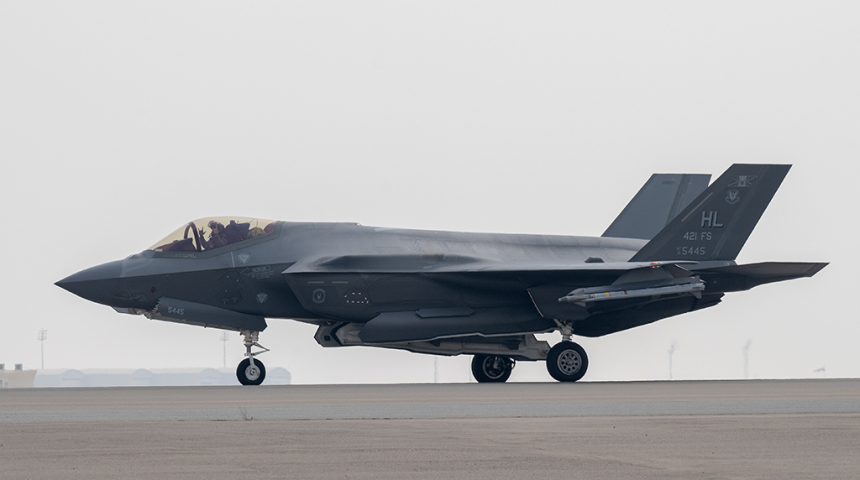With the arrival of the F-35 stealth fighters, the Russian pilots have become less aggressive towards U.S. assets in the Middle East region.
The deployment to the CENTCOM area of responsibility of a squadron of F-35A Lightning II aircraft from Hill Air Force Base, Utah, has already had a positive effect, U.S. officials told to Air & Space Forces Magazine: Russian pilots have become less aggressive toward U.S. forces.
The 5th generation aircraft, assigned to the 421st Expeditionary Fighter Squadron, were deployed to “help defend interests, promote regional security and safeguard freedom of navigation in the region,” and deter Iran’s recent attempts to seize commercial oil tankers in the Persian Gulf, but their presence has also coincided with a different behaviour on the Russian side.
When the deployment was announced, defense officials said that, if required, the F-35s could be used in contested airspace over the Gulf and the Strait of Hormuz and over Syria if Russia presented a more significant threat following the tense interactions between Russian Su-35s and U.S. remotely piloted aircraft.
Despite the U.S. has not changed the way its MQ-9 Reaper drones operate in anti-ISIS missions (more often than not in northwest Syria, where Daesh militants have sought refuge) “we have seen a decrease in the level of aggressiveness of the Russian activities against our MQ-9s,” the official said.
According to the U.S. officials, the U.S. drones are still being intercepted by the Russians with one to two aircraft but doing so less often and without trying to directly interfere with U.S. flight operations, a significant shift compared to what happened in July when a number of Russian Su-35S aircraft flew dangerously close to a U.S. MQ-9 drone over Syria and “harassed” the Reaper also deploying flares from a position directly overhead the Reaper with only a few meters of separation between aircraft. In one of the “close encounters”, one of the Russian flares struck the U.S. MQ-9, severely damaging its propeller.
Needless to say, the F-35s are not the only assets deployed to the region: along with the Lightning II aircraft, two squadrons of F-16s and one of A-10s are deployed in the area, along with a P-8 Poseidon maritime patrol aircraft, so it’s possible that the change in the behaviour on the Russian side, if confirmed, was caused by the combined force the U.S. moved to the CENTCOM AOR.
Anyway, historically, U.S. stealth fighters have always had a deterrence capability in the Middle East crisis: for sure, some of our readers will remember the intercept of two Iranian F-4s by two U.S. F-22s in 2013. The Iranian Raptors were getting a bit too close to an American MQ-1 Predator drone flying an intelligence gathering mission in international airspace some 16 miles off Iran: Chief of Staff Gen. Mark Welsh later explained that an F-22 stealth fighter escorting the UAV (Unmanned Aerial Vehicle) silently flew next to the two Iranian Phantoms, checked their armament, popped up on their left wing and then radioed: “you really ought to go home!” Something reminding the famous “Watch the birdie” of Goose and Maverick in Top Gun.
In 2016, over Syria, two Syrian Su-24 Fencer attempting to fly over a Kurdish-held area in northeastern Syria where U.S. SOF (Special Operations Forces) were operating, were intercepted by U.S. F-22 and encouraged to depart the airspace.
In short, U.S. stealth fighters have always made their presence felt in the region (no matter the fact they usually don’t operate in stealth mode and carry radar reflectors for their missions in the theatre).

In Europe, Russian pilots have been “relatively safe and professional” since one of their Su-27 hit and forced to crash an MQ-9 during an intercept over the Black Sea in March, U.S. Air Forces in Europe commander Gen. James B. Hecker said Aug. 18 during a Defense Writers Group event, Air & Space Forces Magazine reported.









